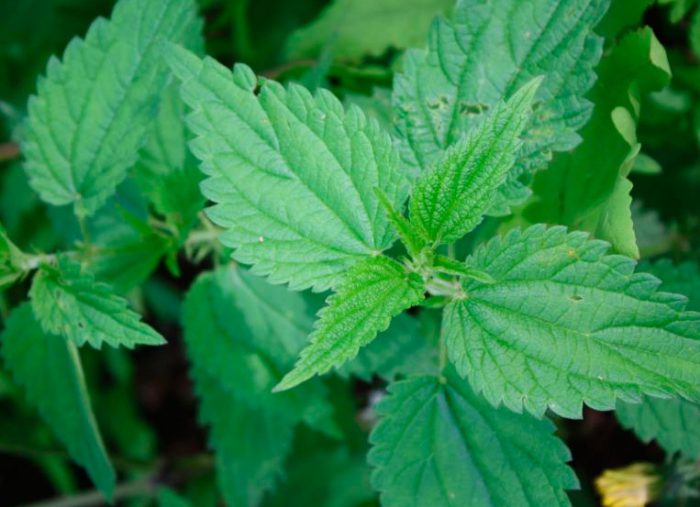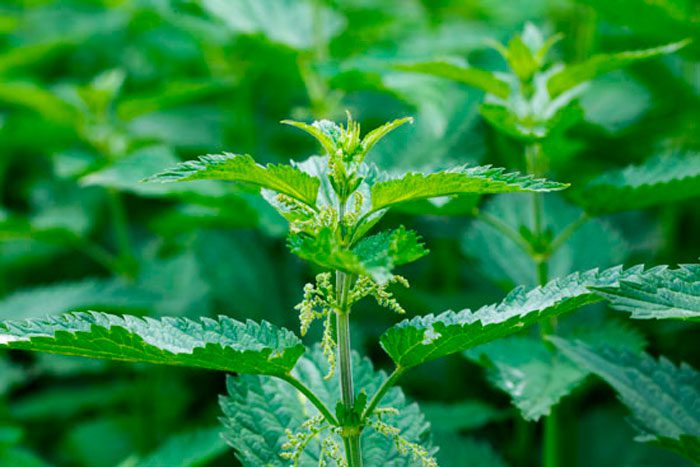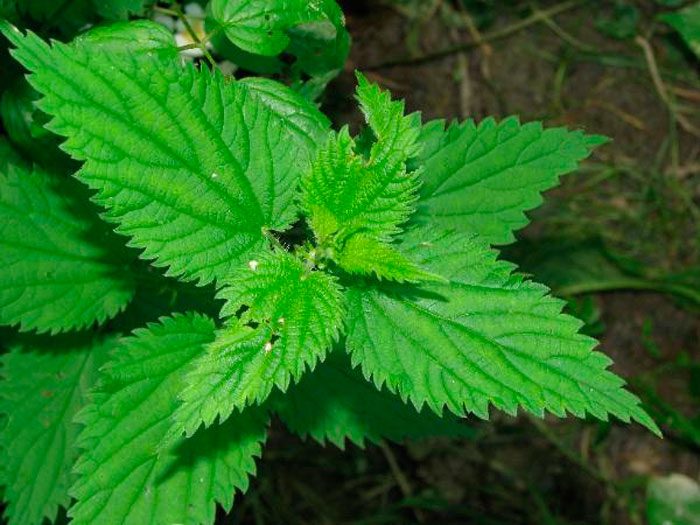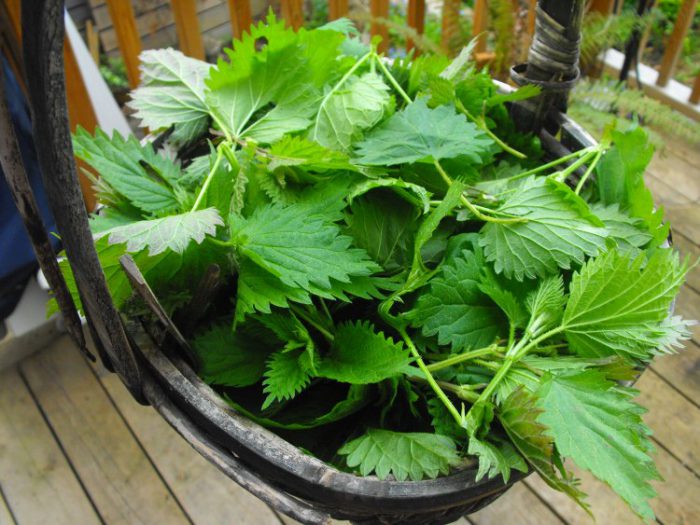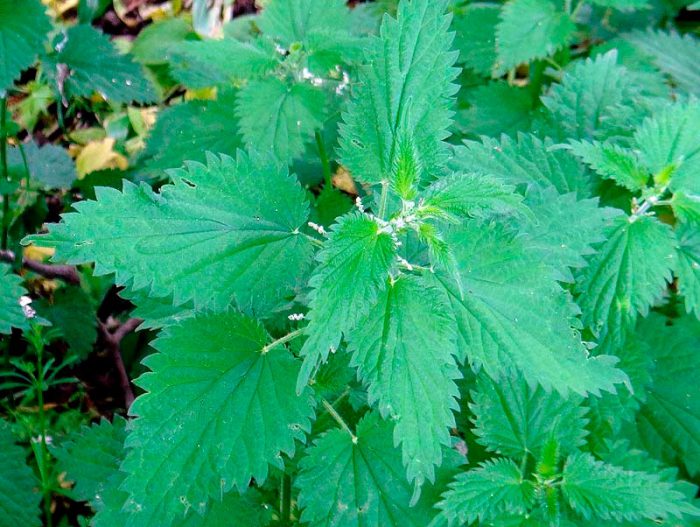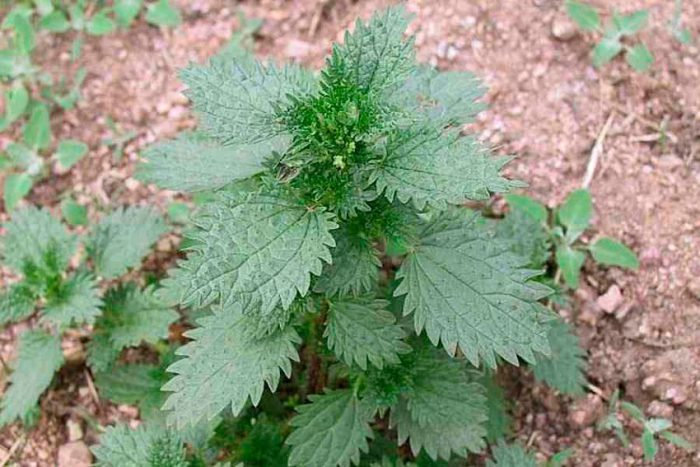The flowering plant nettle (Urtica) is a member of the nettle family. This genus unites more than 50 different species. In the wild, they can be found in temperate regions in both hemispheres. In the middle latitudes, the most common species are stinging nettle (Latin Urtica urens) and stinging nettle (Latin Urtica dioica), which is also called a stinging nettle, a stinging nettle or a stinging nettle. Plants belonging to these species are very valuable medicinal and food raw materials, and chlorophyll is also extracted from them on an industrial scale, which is widely used in the pharmaceutical and perfume industries.
Content
Features of nettle
A perennial or annual plant such as nettle can be dioecious or monoecious. Solid oppositely positioned sheet plates have a serrated, serrated or three-square-cut edge. A large number of stinging bristles are often found on the surface of leaf blades and shoots. The pseudo-spike inflorescences include staminate or pistillate flowers. The fruit is a flat-shaped compressed nutlet that is covered with a perianth.
The structure of the stinging hairs of this plant, which is a rather large cell, is similar to a medical ampoule. Inside them there is juice, formic acid, choline and histamine are present in its composition. If you touch such a hair, then its upper part breaks and sticks into the surface of the skin. The juice trapped under the skin causes a sharp burn sensation only in the place that has come into contact with the nettle. As a rule, such burns do not harm human health. However, there are several tropical nettle species, the burns of which can be fatal to humans. On the territory of Russia, nettle prefers to grow near fences, in vegetable gardens, damp meadows, wastelands, forest clearings, near roads, along the banks of reservoirs, in ditches, as well as in ravines. The fact that stinging nettle has healing properties became known to people for a long time, in this regard, such a weed plant is grown both by gardeners and cultivated on an industrial scale.
Growing nettles
Nettle can grow quite normally without much care, however, if it is planted in specially prepared and fertilized soil, the growth and development of the bush will noticeably improve. Reproduction of such a plant is carried out by seeds and segments of rhizomes.It is not necessary to prepare seeds before sowing, but if they are stratified for 4 weeks at an air temperature of 0-5 degrees, then their germination will increase by 20-30 percent.
It is recommended to grow stinging nettle, which is perennial, in a well-lit area or in partial shade, the soil should be sandy or nutritious and well-moistened. The site must be cleaned of rhizome weeds. Sowing is carried out in early spring or before winter, while the appearance of the first seedlings can occur already at an air temperature of 8 degrees. First, the seeds are mixed with sand, and then they are buried 10-15 mm into the soil, a distance of 0.6 to 0.7 m should be left between the rows. The surface of the area with crops should be covered with a thin (about 0.5 cm thick) layer of humus peat, and if the sowing was carried out at the beginning of spring, then until the first seedlings appear, you need to make sure that the soil is a little moist all the time. If sowing was carried out before winter, then the first seedlings will appear in April, and if in spring, then in May.
For reproduction of nettle in a vegetative way in spring, its rhizome should be removed from the soil, which is cut into pieces, while their length should vary from 8 to 10 centimeters. Then the cuttings are planted in a new place to a depth of 8 centimeters, while a distance of about 0.6 m should be kept between the holes. In nettles multiplied in this way, the beginning of budding is observed 4 weeks earlier than grown from seeds.
Nettle care
The first 2 months, the seedlings will be very weak, while their growth and development will be extremely slow. But then the bushes will begin to grow very quickly, and will soon become thick and branched. There is absolutely nothing complicated in caring for this plant. He should ensure timely watering, loosening, feeding and weeding. For irrigation, it is recommended to use water from a spring, a well, or rainwater, while it must first be heated in the sun.
Nettle needs a lot of nitrogen, but it is not recommended to use mineral fertilizers for fertilizing. It is better to replace them with rotted compost or manure.
Caring for this plant is facilitated by the fact that it is highly resistant to pests and diseases. However, caterpillars of urticaria butterflies can still settle on it, they will have to be collected manually in June. Collecting them is quite easy, because they settle in clusters, but do not forget about safety measures, as nettles can leave severe burns on your hands.
Collecting nettles and storing
Nettle uses rhizomes, seeds and leaf plates as healing raw materials. Stinging nettle foliage is harvested in June – September when the plants are in bloom. Some gardeners are advised to collect leaves by simply wearing gloves, others mow the grass, and when it completely wilts, tear off the leaf plates with their bare hands. It is believed that it is best to harvest the foliage on Tuesday at dawn in the first quarter of the moon. According to the lunar calendars, such raw materials will have a special healing power.
The collected foliage must be laid out somewhere in a shaded place (in the attic or under a canopy), having previously spread a cloth or paper. Please note that the layer thickness should not exceed 3-5 centimeters. If they are dried in the sun, then some of the healing properties will be lost, and the leaves themselves will become colorless. To dry them, if you wish, you can use the oven, while you should set the temperature to 50 degrees, and leave the door open. In completely dried leaves, the midribs and petioles will break without effort. They will have a mild aroma, dark green color and a slightly bitter taste. It should be noted that the output volume of raw materials will be equal to 1/5 of the original volume.The dried leaves need to be sorted out, while it is necessary to remove all yellow, black and brown leaf blades, as well as litter. For storage, they are poured into bags of cloth or paper, which then must be placed in a well-ventilated, dry, dark place. Raw materials can be stored for no more than two years.
Seeds of stinging and dioecious nettles should only be harvested after they are fully ripe. As a rule, this happens 20 days after the plant has faded, in September. The tops of the nettle should be trimmed, lightly dried and threshed.
It is recommended to extract the rhizomes of stinging nettle in spring or autumn. All dirt is removed from them, and then they are dried at a temperature of 40 degrees. Choose a dark, dry and well-ventilated place for storage. The rhizomes retain their beneficial qualities for three years. If you harvest nettle rhizomes, keep in mind that 10-15 percent of the bushes will need to be left on the site for renewal, because during the collection of raw materials, you have to destroy the entire plant. At the same time, you need to know that it will be possible to re-collect the rhizomes in this area only after 3 years.
Types and varieties of nettles with photos and names
Types of nettles with healing properties:
Stinging nettle
This herbaceous perennial plant has a strong root, while its rhizome is horizontal, branched. The height of the bush varies from 0.6 to 2 m. On the surface of all aerial parts of the plant, burning hairs are located. On elongated shoots, there are straight or ascending hollow stems. Leaves are arranged oppositely in a cross. Dark green, simple, whole, equilateral leaf plates have long petioles. They are about 17 centimeters long and about 8 centimeters wide. Leaves can be ovate-lanceolate, oblong or ovoid-heart-shaped, less often elliptical plates with a deep heart-shaped base are found. The composition of panicle axillary inflorescences includes small light yellow unisexual pistillate and staminate flowers. The fruit is a compressed achene of a biconvex shape of a pale brown or light yellow color. About 22 thousand seeds can ripen on one bush.
Stinging nettle
This annual dioecious herb has furrowed tetrahedral erect shoots, the height of which can reach 15–35 centimeters, and there are glandular stiff hairs on their surface. Dark green, serrate, oppositely located leaf plates have an oval or ovoid shape, and reach 20–60 mm in length. There are a large number of stinging hairs on their surface. Small axillary flowers are green, they are collected in an ear or are single. Such flowers are staminate or pistillate. The fruit is either a nut or a polyspermous box.
Nettle properties: harm and benefit
Healing properties
Nettle leaf plates contain vitamins A, H, C, E and K, B1, B2, B4, B5, B6, B9, niacin, macroelements chlorine, calcium, potassium, magnesium, phosphorus, sodium, microelements copper, barium, aluminum, molybdenum, iron, zinc, selenium and manganese. Lemon contains a couple of times less ascorbic acid than nettle. At the same time, the amount of vitamin A in this plant is somewhat higher than in sea buckthorn, carrots, spinach and sorrel. This plant also contains tannins, phytoncides, chlorophyll, flavonoids and organic acids - gallic and formic.
Foliage has a hypoglycemic and hemostatic effect, and it also fights inflammation. Also, the leaves contribute to an increase in hemoglobin levels, uterine tone and the number of red blood cells in the blood. They use this healing raw material to treat diseases of the bladder and liver, anemia, sciatica, pulmonary tuberculosis, rheumatism and metabolic disorders in the body.Nettle has also proven to be highly effective in the treatment of non-infectious chronic prostatitis and prostate adenoma.
In alternative medicine, there are recipes for drugs that have a laxative, diuretic, anticonvulsant, wound healing, expectorant and restorative effect. If you use the foliage of this plant systematically, you can quickly get rid of not very large wounds and ulcers, while nettle infusion, used as trays, compresses and lotions, can save hair from loss. Since ancient times, such a plant has been used to treat hair, for this you need to combine 200 ml of freshly boiled water with 2 or 3 large spoons of dried foliage, after 1 hour the infusion must be filtered. Nettle tea can be used for the same purpose. To prepare it, you need to combine 1 tbsp. water, 1 large spoonful of dried crushed rhizome and the same amount of dry foliage. The mixture is boiled for 30 minutes and then cooled slightly. It should be rubbed into the scalp, while washing the hair after that is not necessary, they are only lightly dried with a towel.
This plant is also used to create a nutrient mixture, which is recommended for feeding tomatoes. For this, healthy leaf plates and shoots must be cut off before seeds are formed. A large container is taken and filled with nettles, which are mixed with the remains of baked goods. As a result, the container should only be ¾ full. Then water is added to the mixture, in which the yeast must be dissolved, while the intended level cannot be exceeded. The container is placed in a sunny place for 3-5 days, which will allow the mixture to ferment, but do not forget to stir it systematically. It is necessary to feed tomatoes with this mixture once every 7 days.
Nettle soup is very popular. Pour olive oil into a frying pan and stew nettle leaves and white onions in it for 7 minutes. Salt water and boil potatoes in it, from which mashed potatoes are made using a blender. At the same time, the container with potatoes is not removed from a small fire and gradually cream, cow's butter and milk are introduced into the puree. At the end, add onions with nettle leaves and mix everything at low speed. You can add grated Gaudi cheese or sour cream to the soup, poured into plates. For 1.5 kg of potato tubers, 0.5 liters of milk, 0.3 liters of cream, 2 small spoons of cow's butter, a bunch of fresh nettles are taken. The rest of the ingredients are added to taste.
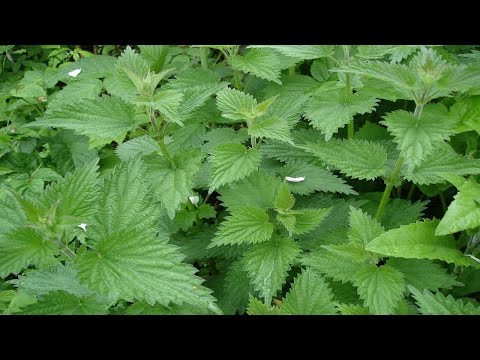

Watch this video on YouTube
Contraindications
You can not use nettle and products made on its basis, pregnant women, especially in the last trimester. Also, it should be abandoned for people suffering from thrombophlebitis.

